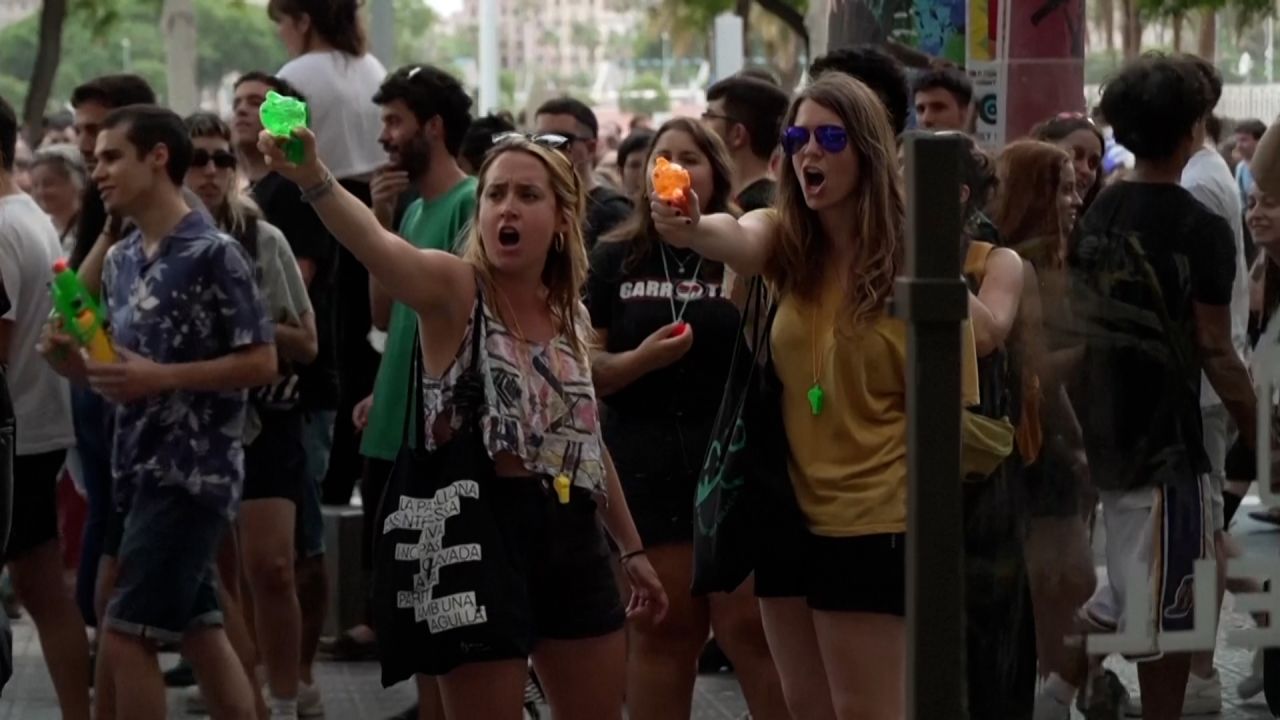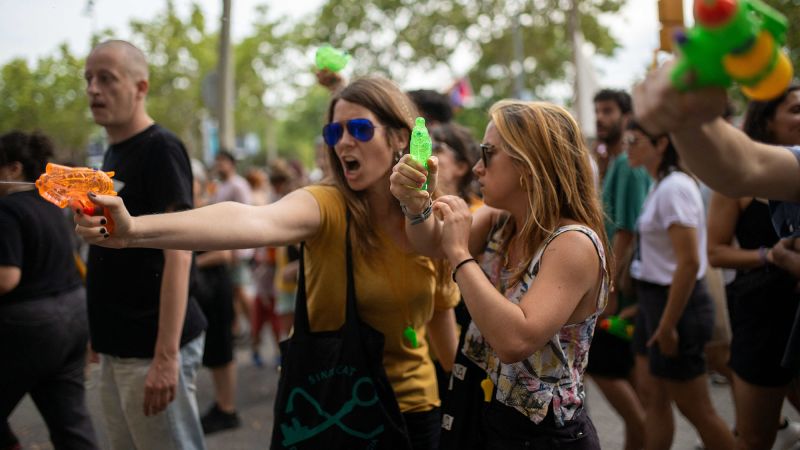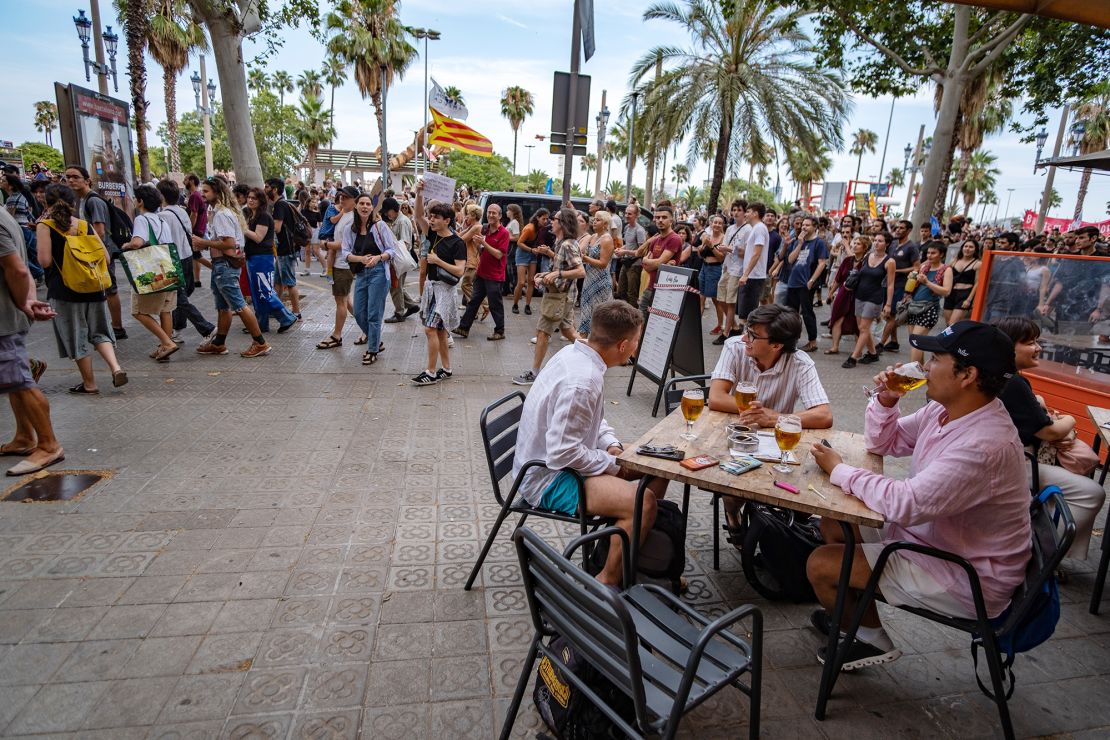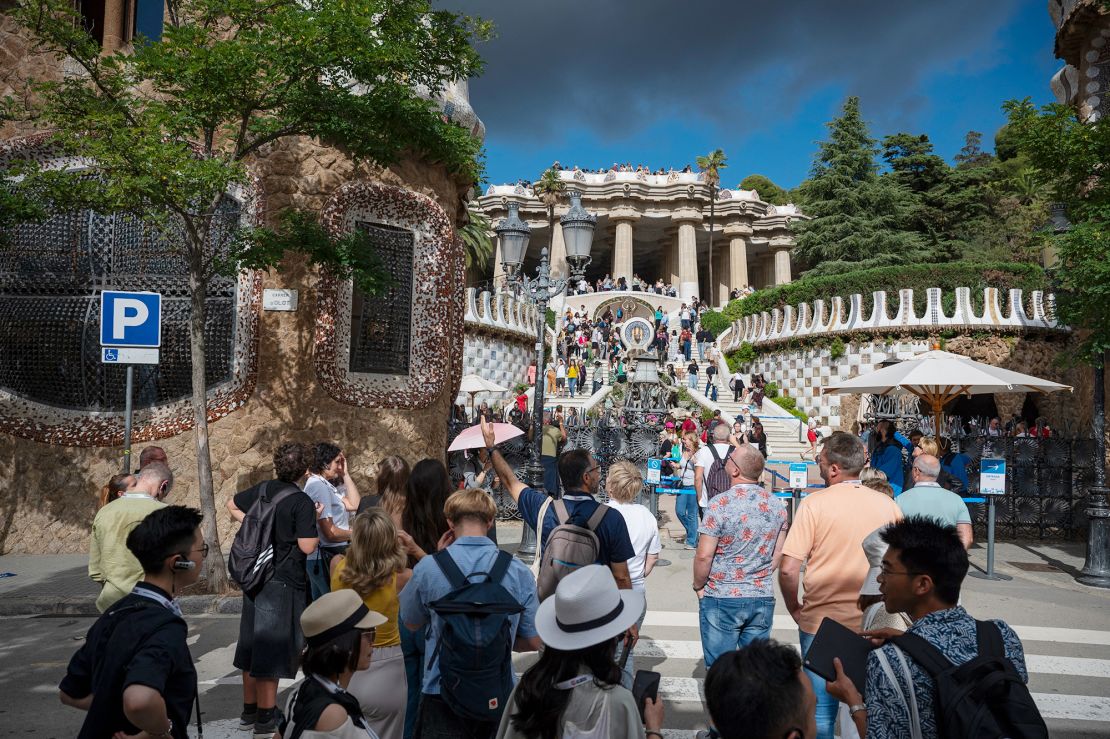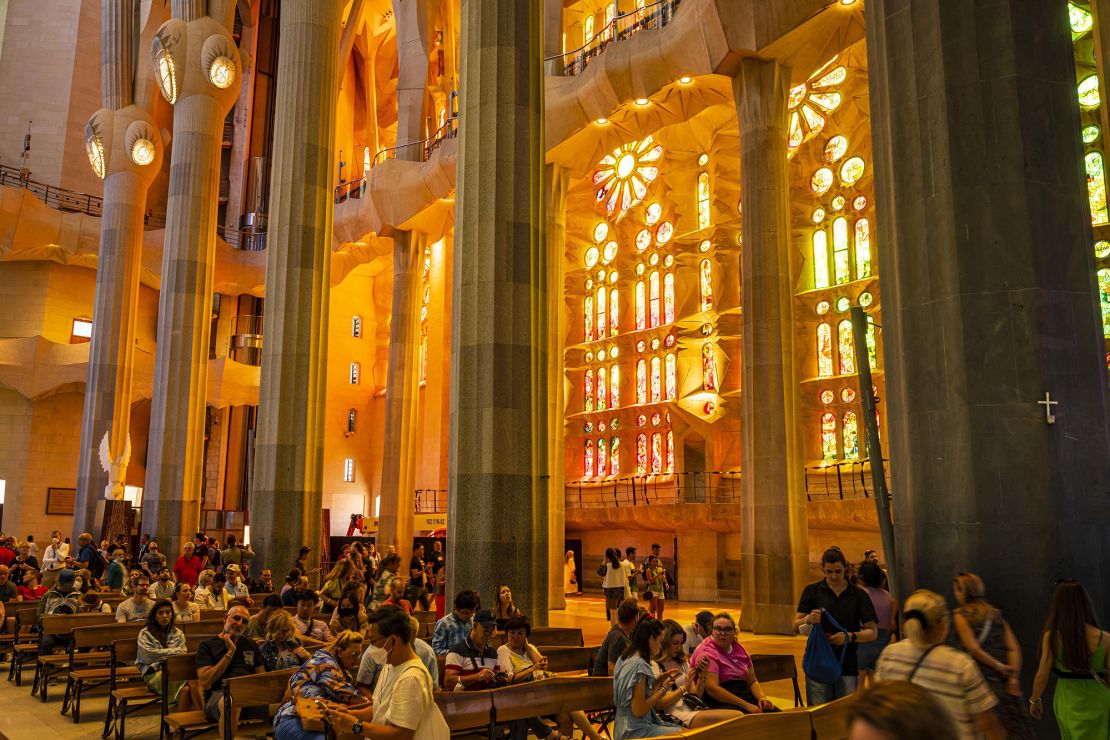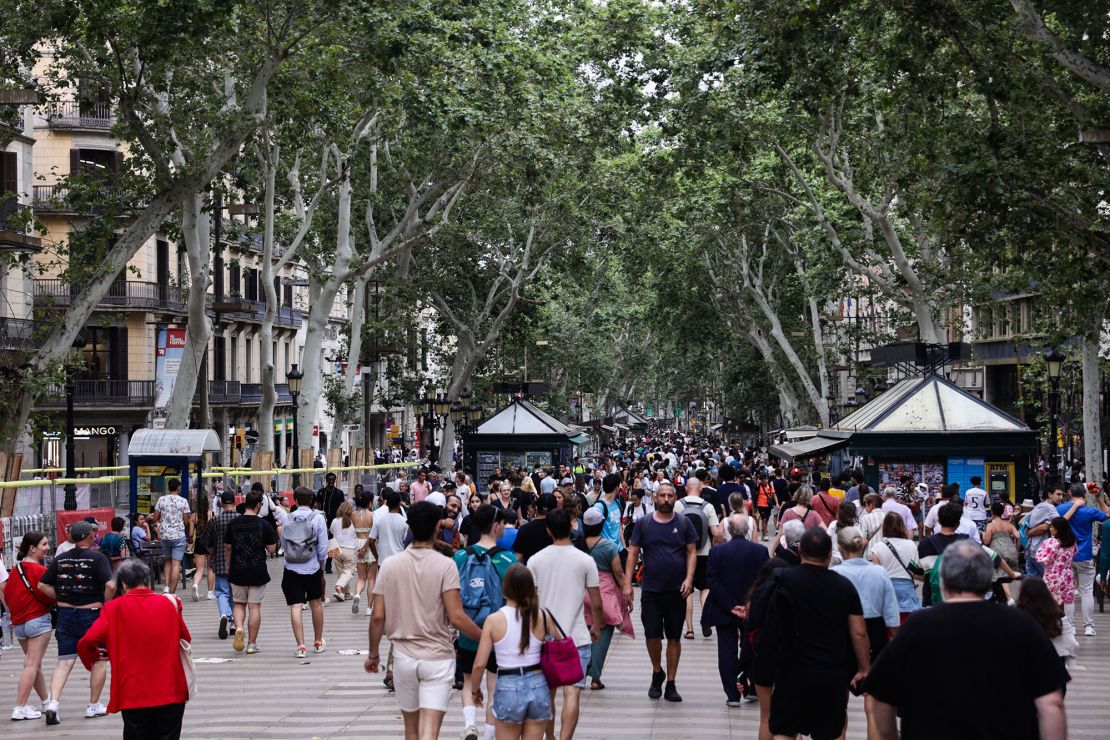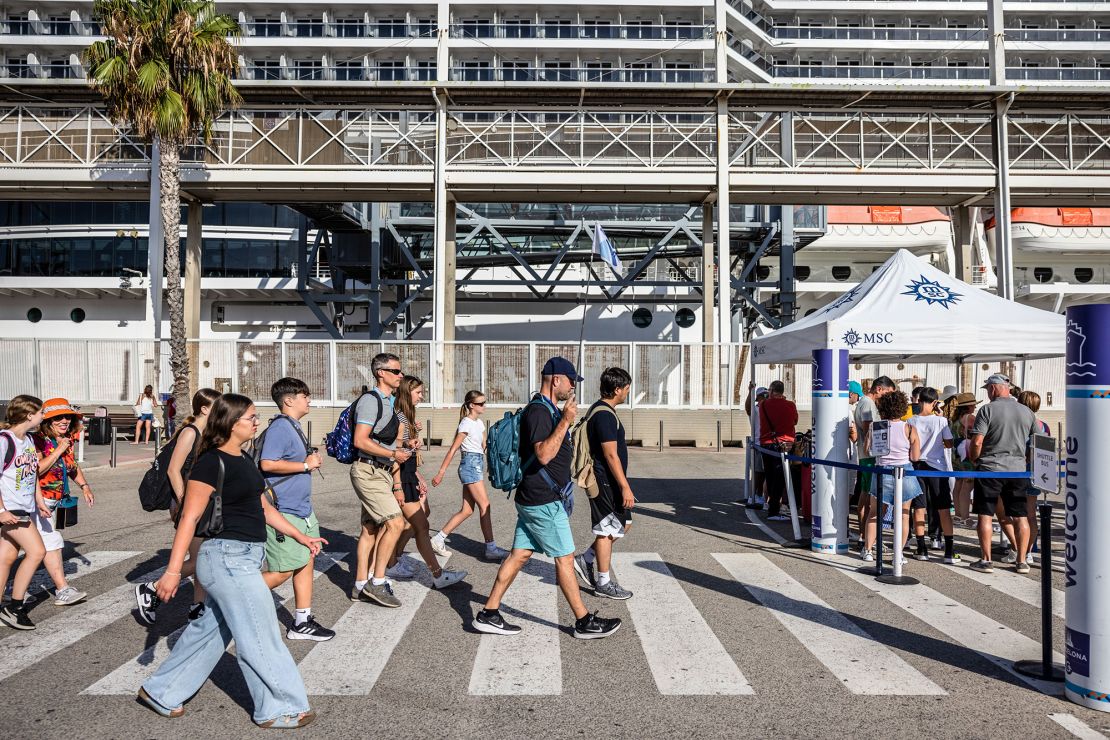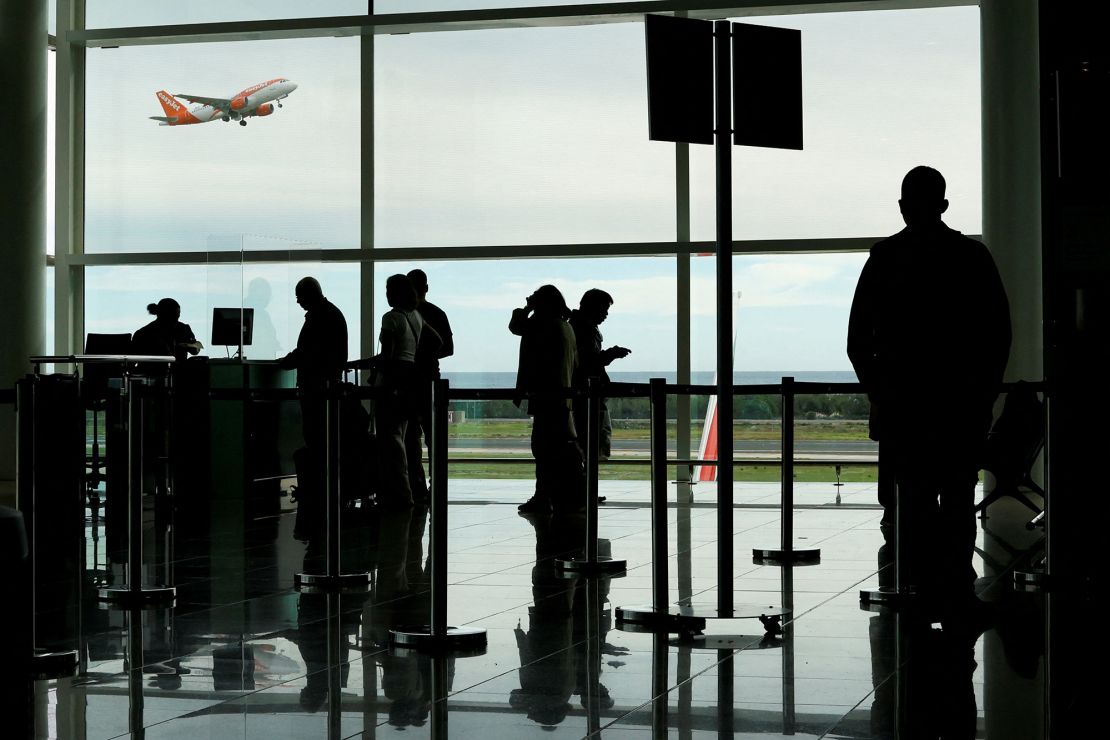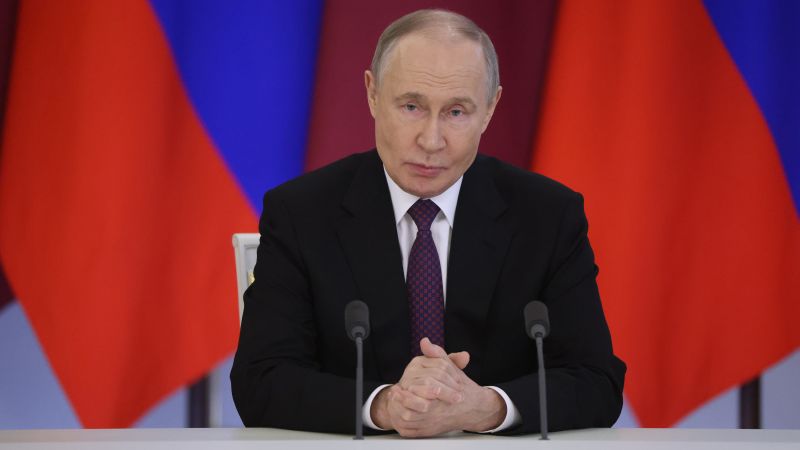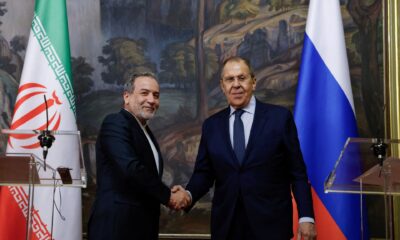CNN
—
It was the water pistol shot that echoed around the world.
In the summer of 2024, after years of enduring the pressures of overtourism, locals in Barcelona ramped up their protest, with thousands gathering to chant “tourists go home.” But it was a small group armed with toy water pistols who made headlines by squirting them at visitors seated in outdoor cafes.
A mischievous, seemingly harmless act, perhaps. Yet as pictures of the incident spread globally, the firepower of those toy weapons soon became apparent. Barcelona’s longstanding tensions over the city’s transformation into a tourist playground had erupted into very public hostility.
The surprise squirt attack, criticized by some top tourism officials, was also emblematic of a situation ongoing in many other destinations, from Amsterdam to Bali, where local residents face being priced out of their own homes by a global tourism industry that gets bigger and more expansive every year.
Barcelona, like many of these places, also faces another problem. While mass tourism might be putting a strain on the city, it’s also vital to its existence, providing jobs and income. Tourism is now 14% of the city’s economy and provides 150,000 jobs, said Mateu Hernández, director of the Barcelona Tourism Consortium.
See Barcelona protesters squirt water at tourists
See Barcelona protesters squirt water at tourists
00:49
It’s a balancing act the city’s tourism officials are only too aware of as Barcelona prepares for the arrival of throngs of visitors this summer. Even as measures are enacted aimed at helping protect local residents, there have been official concerns that many tourists may not feel welcome.
Hernández, whose Consortium is the city’s tourism promotion board, pointed to “a perception that Barcelona doesn’t want tourists. We are worried about Barcelona’s image of overtourism,” he told a group of foreign correspondents in Madrid in January.
Now, authorities are working to change perceptions before this summer arrives. Visitors will certainly still come — a newly opened cruise terminal has the potential to bring in many thousands more tourists — but will some stay away?
Tourism wasn’t always a problem in Barcelona. For years the capital of Spain’s northeastern Catalonia region welcomed a steady but sustainable flow of visitors there to savor the beautiful architecture and Mediterranean lifestyle.
Then came the Barcelona 1992 Summer Olympics. In its runup, an urban renewal upgraded the airport, removed railroad tracks and industry located along the Mediterranean and installed beaches. The Games then provided a spotlight for the style and culture of the historic city that had opened to the sea.
By 2004, Barcelona, a city of 1.5 million residents, received 4.5 million tourists who stayed overnight. The airport soon added a third runway and a new terminal. Ryanair began low-cost flights there in 2010. More cruise ship terminals were built, and by 2019, just before the Covid pandemic, there were 16.1 million overnight tourists, official figures show.
And then the latest backlash. It’s unclear whether last year’s protests had a direct impact, but 15.5 million tourists stayed overnight in Barcelona in 2024 — 100,000 less than in 2023, official figures show. The city’s population had increased to 1.7 million.
Some tourists spend only the day in the city. Among them, 1.6 million cruise ship passengers “in transit” in 2024, the Port of Barcelona reported. The majority come ashore when their ships dock in the morning, tour the city, and return by late afternoon to sail for the next destination, the tourism consortium press office said.
The resulting crowds, at places like La Rambla street and in the adjacent Gothic quarter, the oldest part of town, are partly to blame for the ire among Barcelona’s residents.
“We feel quite invaded,” Joan Albert Riu Fortuny, a lifelong Barcelona resident, told CNN.
One focal point of crowding, said Jordi Valls, a Barcelona deputy mayor whose portfolio includes tourism, is the neighborhood around the iconic Sagrada Familia Basilica. It’s home to 50,000 residents, he said, but in summer, another 50,000 tourists can show up daily there, just to look at the still-unfinished church.
“We think tourist demand is unstoppable,” Valls told CNN. “Everyone is welcome. But there’s a limit,” he said, without specifying the number. “The only possibility is to control the supply.”
A plan to double the tourist tax — up to more than $16 (15 euros) per tourist per night in Barcelona — was unveiled in February by the Catalan regional government. If approved, it would earmark at least 25% of the revenue to help ease a housing shortage, which is a prime complaint among residents.
Short-term tourist rental apartments are widely blamed as a factor in reducing affordable housing in Barcelona. The average price of long-term rental apartments, where residents live, increased 68% in the past decade, the city’s housing office told CNN.
“With tourist apartments, the owner gets much more money by renting it that way than in a long-term lease,” said Riu Fortuny, the Barcelona resident. “There’s not enough available housing.”
In all, Barcelona has 152,000 beds available nightly for visitors, the tourism consortium’s Hernández added, mainly in hotels but also including 60,000 in tourist apartments.
With such a potent industry, the proposed doubling of the tourist tax “does nothing more than legitimize the very touristic activity,” Daniel Pardo, a longtime member of the Assembly of Neighborhoods for Tourism Degrowth, in Barcelona, told CNN. “It’s an isolated measure that doesn’t change the status quo.”
The Assembly helped organize the large tourism protest last July — but not the water pistol part of it, Pardo said. He added that there will “surely” be more protests this year, but that specific plans would be decided later.
At the city’s most-visited sites, there are signs of change in how Barcelona is receiving the tourists.
On La Rambla, sensors were installed last year to measure foot traffic, through cell phone movements, along the 0.8 mile (1.3 kilometer) promenade, said Xavi Masip, manager of Friends of La Rambla, a 65-year-old neighborhood association to protect and promote the street.
“The sensors give an indication of how and where people are moving, at what hours, and the areas with some saturation,” Masip told CNN. “La Rambla is very full. There are times when those of us from Barcelona can feel bothered” about it.
Some congested areas have already been identified, like a narrow section near the Plaza de Catalunya, at one end of La Rambla, Masip said. The port, at the other end of the street, has also installed some sensors.
“A big part of this is that crowds aren’t managed well” on La Rambla, said Will Gluckin, global communications manager for Get Your Guide, a Berlin-based platform offering travel experiences in destinations around the world. The firm is a sponsor for the Friends of La Rambla initiative that installed the sensors.
“We send customers to La Rambla every day,” said Gluckin, whose company has operated in Barcelona for a decade. He told CNN that “poor-quality tourist shops” and many fast-food eateries there have made “La Rambla something of a giant tourist trap instead of a genuinely good place to visit.”
But it’s free, and tourists keep walking it, even as street work continues this year to widen the central pedestrian portion of La Rambla and to reduce the two lanes of vehicle traffic to just one on each side of it, Masip said.
The two most-visited sites that charge entry fees in Barcelona were both designed by modernist architect Antoni Gaudí. Each now sells only advance online tickets. The Sagrada Familia started this in 2020 during the Covid pandemic, and last year had 4.8 million visitors, 87% of them from outside of Spain, its press office said.
Park Guëll, perched on a hill overlooking the city and the sea, shifted to advance online tickets only last year and had nearly 4.5 million visitors. This year the park, with its distinctive Gaudi curvy mosaics, increased the standard entry fee to $19.50 (18 euros), from $10.80 (10 euros). It’s a move aimed at managing the crowds, said deputy mayor Valls.
To make room for more visitors on the street, the city says it has removed benches and small gardens around Sagrada Familia, where a new tower, the tallest of all the church’s spires, is to be completed later this year. At Park Guëll, tour bus and taxi stops have been relocated farther from the entrance, to lessen crowd density there.
Over at the port, Barcelona’s seventh cruise ship terminal just opened in February. It’s a sleek structure exclusively for ships from MSC Cruises, a Geneva-based global cruise operator. MSC said it has stopped using three other cruise terminals at the port for its ships.
But the city aims to reduce the seven terminals to just five, through negotiations, deputy mayor Valls told CNN. Three existing terminals, he said, have concessions due to expire in 2029.
MSC’s Madrid press office told CNN its new terminal has a 30-year concession.
“MSC Cruises is committed to responsible tourism,” a company statement said, adding that it gives prior notice to local authorities about ship arrival and departure times, and details about passengers who’ll visit various tourist sites. “This guarantees that our clients enjoy their vacations while helping Barcelona’s economy and local jobs.”
In all, about 800 cruise ships arrive annually at the port and it’s not the only flash point of big tourism infrastructure in Barcelona. Mayor Jaume Collboni announced last year that the city would revoke permits in 2028 for the 10,000 licensed tourist apartments, to help provide more affordable housing.
But Barcelona’s tourist apartments association, Apartur, opposes this, demanding hefty compensation for the owners and arguing that it would result in more unlicensed tourist apartments.
And there’s talk of expanding Barcelona’s airport, which had a record 55 million passengers in 2024. It’s “at a saturation level,” said Hernández, of the tourism consortium. The airport has direct connections to about 200 destinations globally, 70 percent of them in Europe, also including eight destinations in the United States.
The Spanish government and Catalan officials are discussing “how to increase the capacity and protect the surroundings,” the Catalan president’s press office told CNN, adding that the airport sits in a river delta with European Union-protected marshlands and bird habitats.
Barcelona’s appeal for tourists has even become a subject of study at college, said two American university students on a semester-abroad program in Madrid. They visited Barcelona for the first time in February on a school-organized trip and told CNN that the preparation materials mentioned tourism’s impact on Barcelona.
Sean Thompson, 20, a sociology major from Utica, New York, said, “I really did enjoy the city. It teaches us the effect of tourism on Barcelona and the hyper-tourism.”
Andrew Durkin, 21, a finance major from Scranton, Pennsylvania, said, “I knew, going in, that there were attitudes toward tourists. I expected to be treated differently.”
Their visit included the Sagrada Familia and La Rambla. They expected bigger crowds but said it was a mostly rainy weekend in February, in low season.
But the crowds could be back for the summer.
“We’re making an effort to manage, but high season is high season,” deputy mayor Valls said. “So, there will be more tourists.”
Source link
